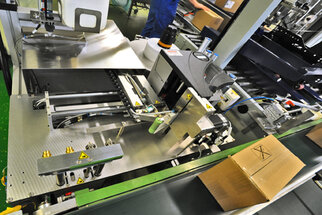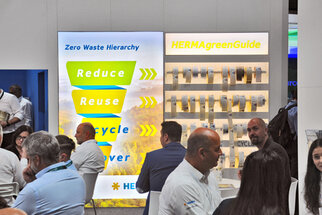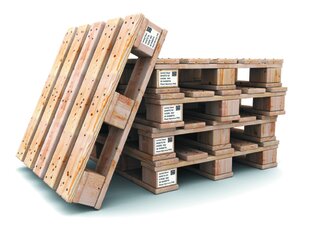Reduce, reuse, recycle, recover: Anyone guided by the four key "Rs" of the zero waste hierarchy will do a lot in terms of sustainability. How labels can already contribute at all levels of this hierarchy is a focus of HERMA at Logimat 2024 (Stand 2C11). The specialist in packaging and product labelling will show the entire range of the so-called Thin Range here. These are particularly lightweight labels that not only save on resources, but also costs. A wide array of paper and film label types cover the most common labelling applications. "Excuses no longer apply. This is because the reduced material and therefore more sustainable variants of the Thin Range offer practically the same functional benefits as the thicker variants for most practical cases," says Thomas Riedl, sales specialist for industrial label applications. Resources can also be drastically reduced with the HERMA InNo-Liner System presented at Logimat. Its labels immediately save on the entire backing material, the release liner. Used in logistics and distribution centres, for example, this means drastically reduced waste volumes – and a carbon footprint that is about 45 percent lower than with conventional labels. As the InNo-Liner labels are also silicone-free, they offer a wide range of printing options. In addition, HERMA will be presenting the latest wash-off solutions for labels for the aspects of "reuse" and "recycle", for example for the permanent labelling of reusable containers or for use on plastic bottles and containers from which clean recycled material is to be recovered. Using packaging materials again at least in a meaningful way ("recover") is the aim of compostability. HERMA is presenting labels in this respect that are certified for both garden and industrial composting.
Upgrades for applicators at the touch of a button
Sustainability is also becoming increasingly important for the HERMA applicators. This makes it easy to code-activate speed or function upgrades on the HERMA 500. This saves having to completely replace the applicator. It can also be easily retrofitted with a common thermal transfer printer for printing variable data, especially for logistics applications. Thanks to the latest interfaces, it is also well prepared for Industry 4.0 requirements. This makes it a particularly safe investment – and therefore also fulfils a specific form of resource-friendly sustainability. The same applies to the HERMA PA4 and PA6 print & apply systems. The components used in these systems, such as the print unit, dispenser unit and winder, can be positioned in any orientation and offer many options for the integration into existing production lines. The proven standard components of the modular HERMA system, which are also used in high-performance labelling systems, guarantee reliable application of the labels and, if necessary, a straightforward modification without the need for a new investment.
How each pallet remains uniquely identifiable
The fact that HERMA, a leading specialist in packaging and product labelling, is able to find an answer to any challenge is also true for the labelling of wooden pallets. These continue to play a major role, especially in intralogistics. But roughly sawn wood has a surface that is recognised as being challenging. That is why HERMA has developed labels with a particularly strong adhesive and excellent adhesive application. Both ensure that sufficient connections can form between the uneven surface of the wooden pallet and the adhesive layer of the label – thus enabling permanently reliable labelling of the pallet base directly on the wooden surface of the pallets, without any additional fixing.


